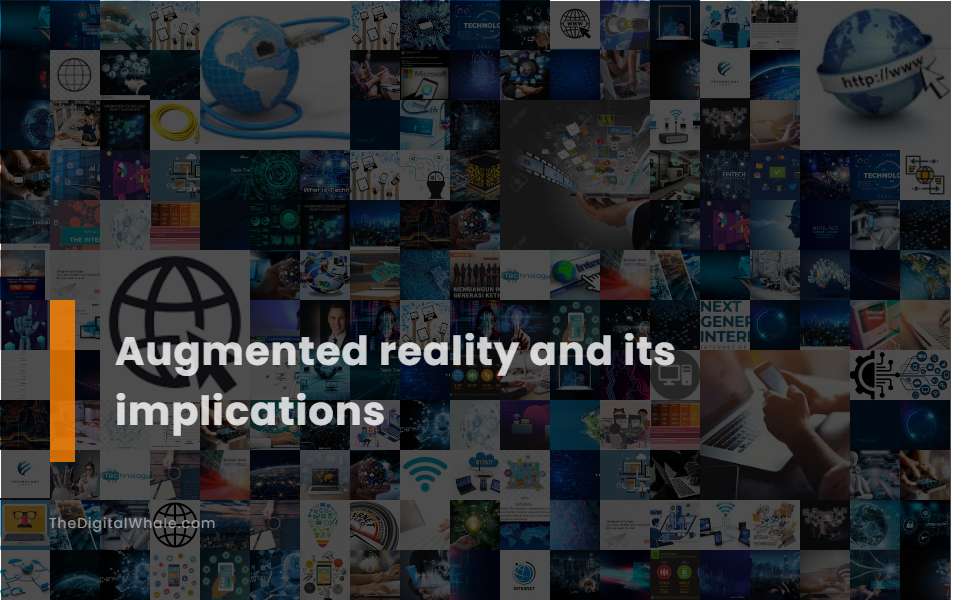Augmented Reality and Its Implications
What is Augmented reality and its Applications? What are the implications of augmented reality for health and medicine? Let's find out more about Augmented Reality and Its Implications.

Enhanced Motion Capture: Human pose estimation algorithms for motion capture experiences.
Real-time motion capture in AR/VR enhances user experiences by enabling instantaneous tracking of movements, creating fluid and responsive interactions. This technology allows avatars to move in sync with users in VR and digital objects to respond to gestures in AR, deepening immersion and making interactions more natural and lifelike. For more information, visit the comprehensive guide on Real-Time Motion Capture in AR/VR to explore how this cutting-edge technology is shaping digital experiences.
Scene Geometry: Object occlusion and real-world physics for virtual objects using topological maps.
In Augmented Reality, scene geometry plays a crucial role in object occlusion and real-world physics for virtual objects. Using ARKit 3.5, scene geometry can be accurately fitted to real-world surfaces with the help of LiDAR scanners, enabling features like virtual object placement, lighting, and occlusion by real-world objects. These functionalities also allow for realistic physics collisions between virtual and real-world objects. To explore more about these advanced capabilities, visit the Apple Developer Videos page.
Medical Training: Reducing risk in surgeries and improving accuracy in the healthcare industry.
Augmented Reality (AR) is revolutionizing medical training and surgery by offering enhanced accuracy and safety through advanced 3D visualizations. This cutting-edge technology allows medical students to engage in virtual cadaveric dissections, providing a hands-on learning experience without the use of real human bodies. In the operating room, surgeons can benefit immensely as AR enables the overlay of digital images onto the surgical site, enhancing precision and minimizing the risk of damaging critical structures. Furthermore, AR in Surgery provides real-time guidance and displays patient imaging data directly in the surgeon's field of view, significantly reducing the need to divert attention away from the patient. This streamlining of surgical processes not only leads to improved patient outcomes but also fosters a collaborative environment where specialists can contribute to procedures using simulated surgical techniques. As AR continues to integrate into healthcare, it promises shorter, safer surgical experiences with faster recovery times, ultimately transforming patient care for the better.
Logistics in Business: Optimizing routes, transportation, and reducing unnecessary expenses.
In the realm of logistics, Augmented Reality (AR) is revolutionizing how businesses optimize routes and transportation processes. By offering real-time navigation and dynamic inventory management, AR solutions assist with loading and unloading, significantly reducing errors and unnecessary expenses. As highlighted by Eastern Peak, this technology enhances overall productivity and efficiency across the logistics chain. Moreover, AR streamlines operations by providing precise visual cues, which lead to faster delivery times and reduced operational costs. These advancements not only improve vehicle maintenance but also result in higher customer satisfaction, marking a significant transformation in logistics management.
Impact on Behavior: Influencing how people walk, turn their head, perform tasks, and interact socially.
Augmented Reality (AR) significantly influences people's behavior, affecting how they walk, turn their head, perform tasks, and interact socially, even after the AR device is removed. Studies highlighted on Stanford News show that participants avoided sitting on a chair a virtual person had sat on and felt less socially connected during conversations while wearing AR goggles.
Related:
What are some good reasons not to limit screen time for children? Do kids need "a lot" of screen time? Let's find out more about Should There Be Limits On Screen Time for Teenagers?.
Environmental Benefits: Potential to reduce commuting and flying by enabling realistic virtual meetings.
Augmented Reality (AR) and Virtual Reality (VR) can significantly reduce environmental degradation by minimizing commuting and flying through the enablement of realistic virtual meetings, thereby reducing greenhouse gas emissions associated with transportation for entertainment, business, and other purposes. This innovative [technology](https://arinsider.co/2021/10/27/4-ways-ar-and-vr-can-help-save-the-planet/) also helps in reducing travel expenses and the need for physical office spaces, leading to lower energy consumption and waste.
Education: Creating immersive and interactive learning experiences for students.
Augmented Reality (AR) in education transforms traditional lessons into interactive and immersive experiences, allowing students to explore complex subjects such as geography, biology, and chemistry through 3D visualizations, virtual field trips, and hands-on interactions, thereby increasing student engagement and comprehension. AR enhances classroom learning by creating interactive environments, using enhanced visualization, and promoting experiential and personalized learning, enabling students to engage with educational content in a more dynamic and visually rich manner, and improving their retention and understanding of the subject matter. In this rapidly evolving landscape, AR In Education provides students with active, effective, and meaningful learning experiences by offering interactive and gamified content, which not only improves engagement and memory but also presents a cost-effective alternative to traditional learning materials. The use of AR facilitates a swift and effective learning system through rich visuals and immersion, making classes more interactive and fun while enhancing collaboration and comprehension of complex concepts. Furthermore, AR contributes to immersive learning by creating environments that replicate real-world scenarios, engaging students through virtual explorations, simulations, and hands-on activities, thus catering to different learning styles and boosting critical thinking, problem-solving, and collaborative skills.
Military Applications: Improving situational awareness, navigation, and communication with systems like IVAS.
Augmented Reality (AR) in military applications significantly enhances situational awareness, navigation, and communication. Systems like the Integrated Visual Augmentation System (IVAS) provide soldiers with real-time data, interactive maps, and target identification, improving decision-making and operational effectiveness on the battlefield. For instance, The US Army's IVAS uses AR to display real-time data feeds, guide soldiers through complex terrain, highlight potential threats, and facilitate seamless communication, ultimately enhancing situational awareness, navigation, and coordination among troops. This technology also enables immersive training simulations and improves target identification and tracking accuracy.
Safety and Emergency Response: Alerting first responders to danger areas and guiding people to safe zones.
Augmented Reality (AR) significantly enhances public safety and emergency response by providing real-time situational awareness, alerting first responders to danger areas, and guiding people to safe zones through overlaid critical information such as building layouts, victim locations, and evacuation routes. By integrating AR into safety protocols, professionals can access crucial data instantly, ensuring that they respond promptly and effectively during emergencies. This technology ensures safety management by enhancing situational awareness, offering real-time on-site information, and guiding individuals through complex environments using AR-based navigation systems. Such innovations play a transformative role, helping responders reach the scene quickly and safely while avoiding hazards. For a deeper dive into these advancements, the transformative role of augmented reality in public safety is thoroughly explored on the Digi Leaders website.
Computer Vision and SLAM: Analyzing real-world data to accurately overlay digital content and track device location.
SLAM, or Simultaneous Localization and Mapping, is a crucial component of Augmented Reality (AR) that enables devices to build a 3D map of their surroundings while simultaneously tracking their location. By utilizing cameras and image recognition software, SLAM accurately overlays digital content onto the real world, preserving both spatial cognition and field of view. This technology is essential for the seamless integration of virtual items with our physical environment, enhancing the immersive experience offered by AR applications. For a deeper understanding of its applications and methodologies, explore the comprehensive resources on SLAM, an invaluable tool in advancing modern AR technologies.
Related:
What is the importance of ethics among information technology professionals? - What are the implications of technology on the social, emotional, and economic lives of people? Let's find out more about What Role Does Ethics Play In Technology?.
